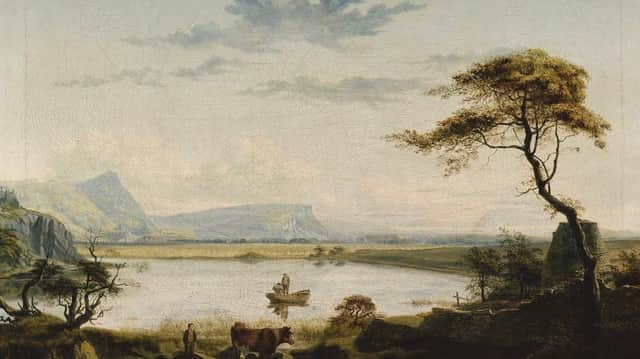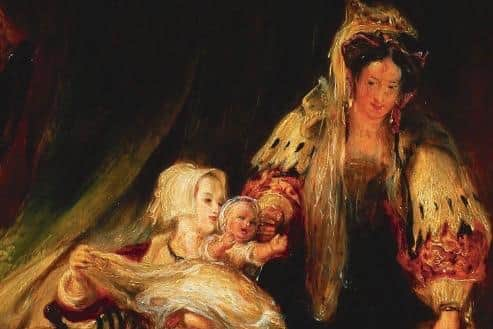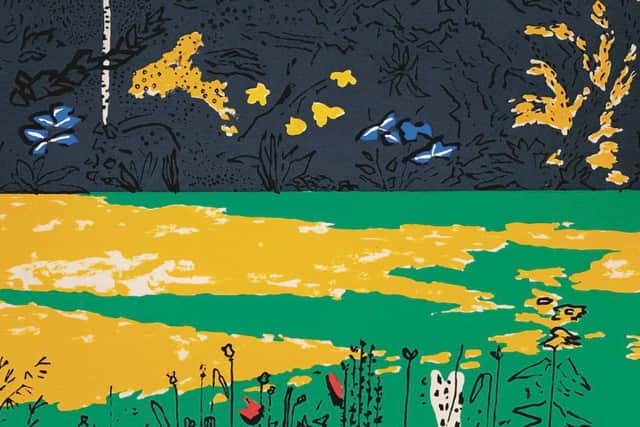Art reviews: The Wilkie Tradition & Twenty Twenty at FAS | Academicians at the RSA


The Wilkie Tradition, Fine Art Society, Edinburgh ****
Twenty Twenty, Fine Art Society, Edinburgh ****
Academicians, Royal Scottish Academy, Edinburgh ****


I was once at a public lecture in St Andrews. It was about David Wilkie. He was a Fifer and aptly the title was David Wilkie and Fife. Two ladies in front of me had maybe come in simply to escape the east wind, but I heard one ask her companion: “And who was David Wilkie anyway?” The knowledgeable reply came back, “Ach, he was the artist frae Cults.” So that was Sir David Wilkie cut down to size. Just a manse and a kirk all on their own, Cults is probably the smallest place in the county. Wilkie’s father was the minister and it was the artist’s boyhood home. But diminishing Wilkie is not so unusual even in more academic circles. I have seen him described by those who should know better as merely an anecdote painter and imitator of the Dutch. He was however much more than that. His contemporaries, Turner and Constable, are rated far above him, yet in his lifetime he was more celebrated than either. Géricault and Delacroix, who, we are taught, were the founders of modern art, greatly admired him. They both visited his studio and learnt from him. He was the equivalent in painting of Sir Walter Scott at a time when all things Scottish were both fashionable and influential. Needless to say, his Scottish contemporaries were in awe of his stellar career. His impact on their art was profound. A small but charming show at the Fine Art Society, The Wilkie Tradition, tells a bit of that story.
There is enough of the master himself to give an idea of the quality of his work and from an early age too. A portrait of Alexander Aitken, a young fellow Fifer, dates from when the 19-year old Wilkie worked briefly at home after leaving the Trustees Academy in Edinburgh in 1804. It clearly shows the influence of his mentor and friend, Henry Raeburn, but the younger artist’s acute observation of expression, even when the sitter is nominally in repose as here, is already striking. Observed expression was of course the currency of his art and as they make eye contact with us across two centuries this is clearly apparent in a tiny but exquisite double portrait of the Misses Mary and Elizabeth Clerk. The same delicacy of observation is striking, too, in the beautiful drawing Young Girl with a Dog. There is also something of the same quality in a portrait by Wilkie’s friend Andrew Geddes of himself with the Scottish miniature painter Anthony Stewart and the painter and engraver John Burnet, another of Wilkie’s close friends. The picture is also a reminder of the companionship of the community of Scottish artists in London to which Wilkie belonged. His example continued too in the younger generation as a beautiful painting The Milkmaid by Thomas Duncan bears witness.
Advertisement
Hide AdWilkie was a lifelong admirer of David Allan and so a couple Allan’s works have been included here. Catechising in the Church of Scotland is typical of his work, a drawing, finished in watercolour, of what was once a commonplace scene. Allan’s draughtsmanship is not as refined as Wilkie’s, nor his observation so subtle, but in their gently humorous record of ordinary human behaviour the two artists are clearly akin. This affinity is apparent too in a drawing by Allan, Memorandum of Cheese Market, evidently done on the spot. Although they never met, Allan collaborated with Robert Burns, illustrating his songs, and the poet thought highly of his work; Scottish art like Scottish poetry and indeed philosophy engaged with the actual. Alexander Carse’s The Travelling Clothier, a vivid picture of ordinary rural life, is a good example. The travelling salesman unfolds his wares in a village street as women haggle with him over his prices. Nearby, people stand and chat or go about their business. It is a beautifully observed and tranquil scene. But it is nostalgic too. Carse, though inspired by Wilkie no doubt, has gone back to 17th-century Dutch painting for his model. It still suits his vision of an ancient pattern of rural life which was however already disappearing if not already gone.
The artist who almost uniquely turned instead to the rough and tumble street life of the contemporary city was Walter Geikie. Deaf-mute from an early age, Geikie benefited from the pioneering teaching of Thomas Braidwood. Braidwood’s method evidently included drawing and several of his pupils became artists, though Geikie was the most notable. He is best known as a printmaker, but a lovely painting of the loch at Lochend with Edinburgh and Arthur’s Seat beyond shows he was a skilled painter of landscape. There is however also a big group of his etchings here.


Humour is an inextricable part of life as Burns’s poetry so vividly reminds us. So it was for Geikie. Many of his etchings are gently comic even if the humour is just his astute observation of the quirks of ordinary human behaviour, Settling for cummie of two men concluding the sale of a favourite cow, for instance, or a wonderful scene that is clearly autobiographical of customers at a print-seller’s stall. But when he observes two old men talking confidentially on a bench, or Newhaven fishwives selling fish, the humour is there in the acuteness of his observation certainly, however what comes across above all is the simple dignity of ordinary humanity.
Equally when in Our Gudeman’s a Drucken Carle, or its companion, He’s just gotten plenty for ae day, he deals with drunkenness, his frankness engenders nothing but sympathy with the human condition in a way that even Wilkie could rarely manage.
The Fine Art Society is also showing a varied group of paintings in Twenty Twenty including a portrait by Raeburn of Francis Jeffrey, a lovely early MacIntosh Patrick of a winter landscape in Perthshire and a rare and beautiful painting by Agnes Miller Parker of a misbehaving cat.
Meanwhile the Academicians’ Gallery at the RSA is also showing a miscellany in On View in September. This includes three striking works by Marian Leven, somewhere between seascapes and abstractions. A set of prints by Joe Ganter are purely abstract, a sequence of overlapping squares and circles in transparent blues and greens. There are also three reliefs by the ever-inventive Doug Cocker – Bottle Wedding is particularly satisfying– and a group of Adrian Wiszniewski’s beautifully drawn and enigmatic figure paintings.
Advertisement
Hide AdAs well as these and other works by living artists, however, the show also includes work by several academicians no longer with us. There is a group of Willie Rodger’s inimitable prints, for instance, and a lovely gouache by Phil Reeves, just four beautifully balanced rectangles in varied greys and ochre: perfect economy, pure visual poetry.
The Wilkie Tradition until 24 October; Twenty Twenty until 14 November; Academicians until 11 October
A message from the Editor:
Advertisement
Hide AdThank you for reading this story on our website. While I have your attention, I also have an important request to make of you.
The dramatic events of 2020 are having a major impact on many of our advertisers - and consequently the revenue we receive. We are now more reliant than ever on you taking out a digital subscription to support our journalism.
To subscribe to scotsman.com and enjoy unlimited access to Scottish news and information online and on our app, visit https://www.scotsman.com/subscriptions
Joy Yates, Editorial Director